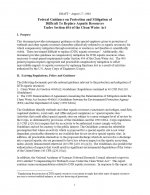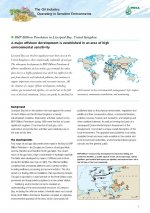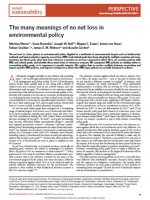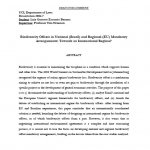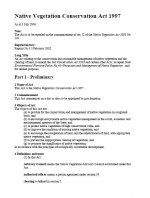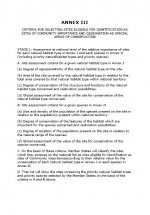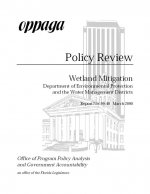Federal Guidance for the Establishment, Use and Operation of Mitigation Banks
Government of the United Stateshe Army Corps of Engineers (Corps), Environmental Protection Agency (EPA), National Resources Conservation Service (NRCS), Fish and Wildlife Service (FWS) and National Marine Fisheries Service (NMFS) are issuing final policy guidance regarding the establishment, use and operation of mitigation banks for the purpose of providing compensation for adverse impacts to wetlands and other aquatic resources. […]
BHP Billiton Petroleum in Liverpool Bay , United Kingdom : A Major Offshore Development is Established in an Area of High Environmental Sensitivity
International Petroleum Industry Environmental Conservation AssociationLiverpool Bay lies in the eastern Irish sea against the coasts of North Wales and North-West England, a heavily industrialized coastline. Exploration activities carried out by BHP Billiton Petroleum during 1990 were the first to locate significant supplies of commercial oil and gas; such exploration and production activities were relatively new to the area at […]
BBOP Glossary Phase 1
A glossary of terms relating to biodiversity offsets, as published in May 2009. This document will be replaced by an updated version in March 2012.
Biodiversity offsets in theory and practice
Joseph Bull - Imperial College LondonBiodiversity offsets are an increasingly popular yet controversial tool in conservation. Their popularity lies in their potential to meet the objectives of biodiversity conservation and of economic development in tandem; the controversy lies in the need to accept ecological losses in return for uncertain gains. The offsetting approach is being widely adopted, even though its […]
The many meanings of no net loss in environmental policy
No net loss is a buzz phrase in environmental policy. Applied to a multitude of environmental targets such as biodiversity, wetlands and land productive capacity, no net loss (NNL) and related goals have been adopted by multiple countries and organizations, but these goals often lack clear reference scenarios: no net loss compared to what? Here, […]
Biodiversity Offsets in National (Brazil) and Regional (EU) Mandatory Arrangements: Towards an International Regime?
Luiz Gustavo Escorcio BezerraBiodiversity is essential to maintaining the biosphere in a condition which supports human and other lives. The 2002 World Summit on Sustainable Development held in Johannesburg recognised the urgency of action against biodiversity loss. Biodiversity offset is a mechanism aiming to achieve no net loss or even net gain to biodiversity through the installation of […]
Native Vegetation Act 1997, Reprint No 1
Government of AustraliaAn Act relating to the conservation and sustainable management of native vegetation and the clearing of land; to amend the Soil Conservation Act 1938 and certain other Acts; to repeal State Environmental Planning Policy No 46–Protection and Management of Native Vegetation ; and for related purposes.
Council Directive 92/43/EEC of 21 May 1992 on the Conservation of Natural Habitats of Wild Fauna and Flora: Annex III
European UnionAssessment at national level of the relative importance of sites for each natural habitat type in Annex I and each species in Annex II (including priority naturalhabitat types and priority species).
Policy Review: Wetland Mitigation Report No 99-40
State of Florida - Office of Program Policy Analysis , Government AccountabilityWetlands provide vital functions to the natural environment, including groundwater recharge, stormwater attenuation, and wildlife habitat. The efforts of the state regulatory agencies, the Department of Environmental Protection (department hereafter) and the water management districts (districts hereafter), are directed at balancing environmental protection with private property rights and economic development pressures.
Biodiversity Offsets: Good for Business and Biodiversity?
Kerry ten KateWhat are biodiversity offsets? Conservation actions intended to compensate for the residual, unavoidable harm to biodiversity caused by development projects, so as to ensure no net loss of biodiversity. Before developers contemplate offsets, they should have first sought to avoid and minimize harm to biodiversity.


